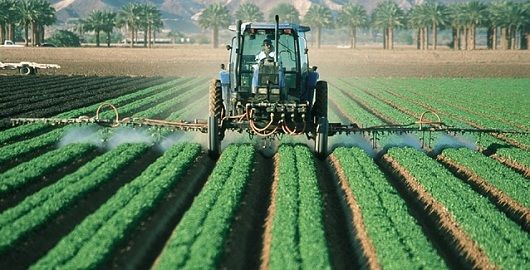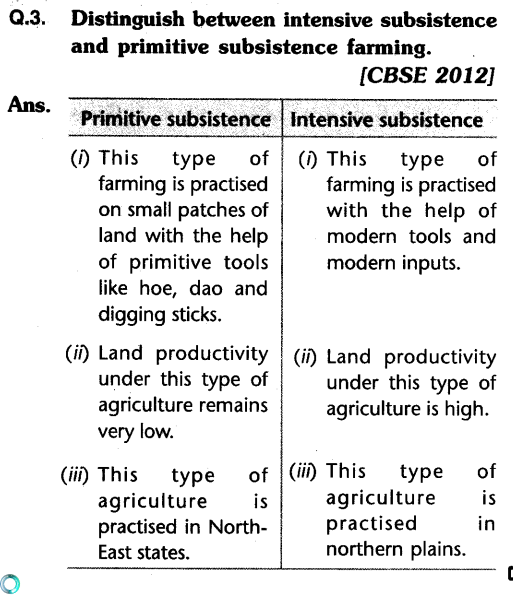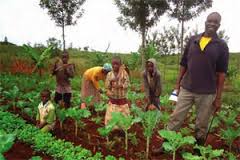An In-Depth Check Out the Challenges and Benefits of Modern Farming
Modern agriculture stands at the crossroads of development and sustainability, presenting a plethora of opportunities and challenges. The course ahead demands a careful examination of these characteristics, inviting stakeholders to consider the capacity for transformative modification in farming methods and policies.
Technological Advancements in Farming
Technical innovations in farming have revolutionized the farming industry, driving increased performance and efficiency. Technologies such as precision automation, agriculture, and biotechnology have actually transformed conventional farming techniques, enabling even more sustainable and successful operations. Accuracy agriculture makes use of GPS innovation, sensing units, and data analytics to optimize field-level monitoring concerning plant farming. This approach allows farmers to use inputs like water, fertilizers, and chemicals extra judiciously, minimizing waste and lowering costs while improving yields.
Automation in farming has actually better pushed the industry forward, with the introduction of self-governing tractors, drones, and robotics. These modern technologies minimize labor requirements and enhance operational rate, permitting for timely planting and harvesting. Drones, in particular, provide valuable aerial images and data, helping farmers in checking crop health and finding concerns early.
Biotechnology has actually additionally played a pivotal role beforehand agricultural techniques. Genetically changed microorganisms (GMOs) have actually been established to enhance crop resistance to bugs and diseases, lower dependence on chemical therapies, and improve nutritional content. This technology adds to food security and fulfills the needs of a growing worldwide population. Jointly, these technological improvements have laid the groundwork for an extra lasting and resistant agricultural future.
Ecological Challenges
Agriculture deals with numerous environmental challenges that intimidate its sustainability and efficiency. One of the key concerns is the deterioration of soil wellness due to extensive farming practices that diminish essential nutrients and bring about erosion. The overuse of chemical plant foods and pesticides additionally intensifies this concern, contaminating water resources and decreasing biodiversity. The long-lasting practicality of agricultural land is compromised, requiring the adoption of even more lasting techniques.
Water shortage is an additional substantial challenge, specifically in areas where agriculture greatly relies on irrigation. Climate change is escalating this issue, modifying rainfall patterns and boosting the regularity of dry spells. Reliable water management systems, such as drip irrigation and rainwater harvesting, are crucial to reduce these impacts, however their application continues to be irregular throughout various regions.
Additionally, farming is both a factor and a target to environment modification. It represents a substantial share of greenhouse gas emissions, mainly from livestock production and rice cultivation. Transitioning to low-emission farming techniques, such as accuracy farming and agroforestry, can help reduce this impact. These techniques require substantial financial investment and technological competence, advice positioning a barrier to widespread adoption. Dealing with these ecological challenges is important for making sure a sustainable farming future.

Financial Effects
The economic impacts of modern-day farming are extensive and complex, influencing both local and worldwide markets. Advances in modern technology and manufacturing methods have actually substantially boosted agricultural productivity, bring about a lot more efficient food supply chains and decreased expenses for customers. This increased productivity has actually enabled countries to satisfy growing needs, stabilize food rates, and contribute to financial growth. In addition, the export of farming products has actually ended up being a considerable resource of revenue for several countries, playing a crucial function in their financial development.
However, these advantages are not without obstacles. The capital-intensive nature of modern-day farming requires significant investment in machinery, plant foods, and genetically changed seeds, which can be financially difficult for small farmers. This often results in boosted financial debt and financial vulnerability, potentially resulting in the combination of farms and the loss of rural incomes. Furthermore, worldwide market changes can affect the earnings of agricultural exports, making economic climates reliant on agriculture vulnerable to economic instability.
Furthermore, aids and trade plans in industrialized nations can misshape market value, affecting competitive equilibrium and possibly disadvantaging farmers in developing nations. Overall, while contemporary farming drives economic growth, it likewise requires navigating complicated financial landscapes to make certain equitable and lasting growth.
Social Implications
While contemporary farming has actually brought around significant improvements, it additionally offers numerous social ramifications that warrant consideration. As corporate farming entities progressively control the farming landscape, smaller sized farms frequently battle to compete, leading to the erosion of country areas and conventional farming practices.

Such techniques may likewise limit customer options and reduce the capacity of local areas to regulate their food sources. As these social effects unravel, it ends up being crucial to resolve them to guarantee sustainable and fair agricultural growth.
Future Directions
Looking in advance, numerous encouraging methods for contemporary agriculture might resolve the obstacles dealt with today while cultivating sustainable growth. Breakthroughs in modern technology, such as precision farming, supply the prospective to optimize source usage and boost efficiency.
Biotechnology also holds immense promise for the future of agriculture. Genetically changed microorganisms (GMOs) and genetics modifying methods, like CRISPR, might improve crop resilience against climate adjustment, parasites, and conditions, therefore boosting food security. Furthermore, branching out plant ranges to include more climate-resilient and nutrient-dense options might reinforce both environmental stability and human nutrition.

Verdict
Modern farming, characterized by technical innovations, offers both chances and difficulties. While innovations site here such as accuracy farming and biotechnology boost efficiency and sustainability, they also add to ecological problems like soil degradation and water shortage. The economic impacts are substantial, leading and affecting small farmers to broader social implications. Dealing with these complexities calls for a shift towards lasting practices that stabilize efficiency with ecological stewardship and social equity, thereby making certain a durable future for global farming systems.
Modern farming stands at the crossroads of development and sustainability, presenting a wide variety of challenges and chances. Additionally, worldwide market changes can influence the profitability of agricultural exports, making economic situations reliant on agriculture vulnerable to financial instability.
Moreover, the extensive usage of innovation and automation in farming has led to a reduction in farming work opportunities.Looking ahead, a number of encouraging methods for modern agriculture could resolve the difficulties encountered today while fostering sustainable growth. commercial farming vs subsistence farming.Modern agriculture, characterized by technological innovations, offers both challenges and chances